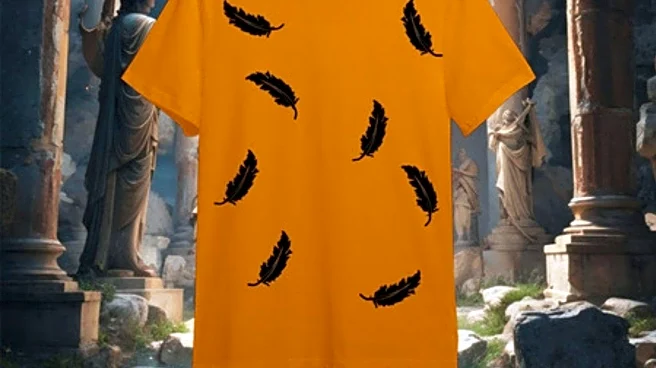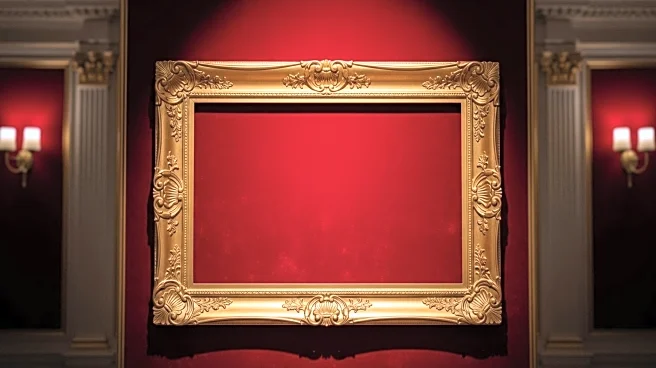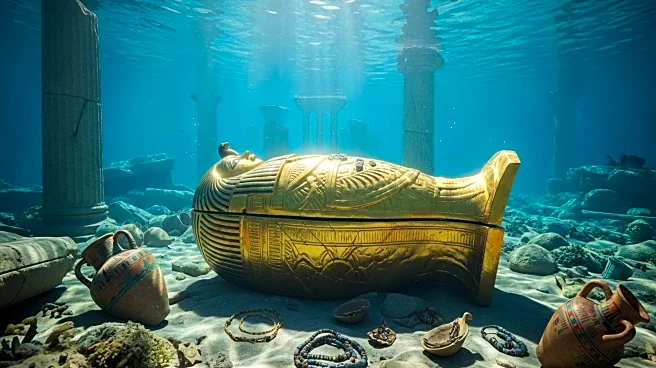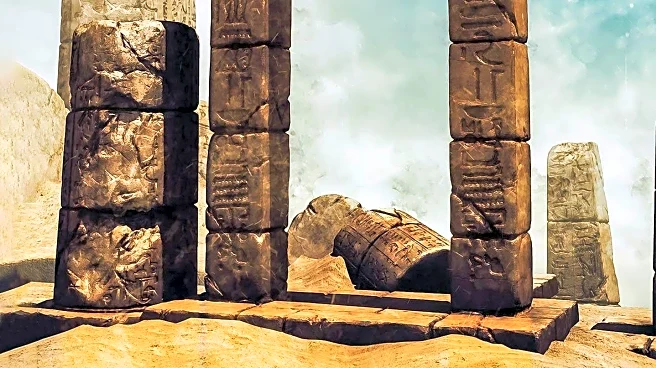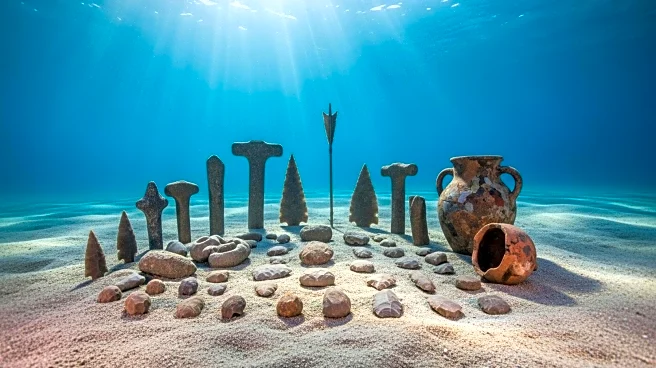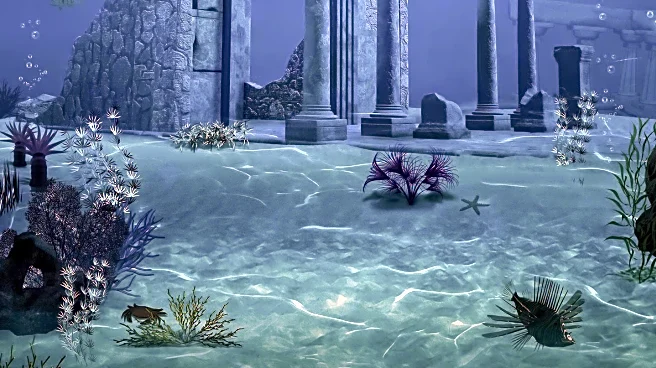What's Happening?
Archaeologists have uncovered a remarkable ancient Roman mosaic at the Villa Romana del Casale in Piazza Armerina, Sicily. Announced by the Archaeological Park of Morgantina on August 4, the mosaic dates back to the fourth century A.D. and was found in a bathing complex. The mosaic features depictions of sandals resembling modern flip-flops, showcasing the intricate craftsmanship of a fourth-century mosaic artisan. This discovery is part of a larger mosaic design that adorned the southern bath section of the villa. Alongside the mosaic, archaeologists found three columns with intact capitals and an inscription, further highlighting the artistic and architectural significance of the site.
Why It's Important?
The discovery of the mosaic with modern fashion elements provides valuable insights into the cultural and artistic practices of ancient Rome. It underscores the high level of craftsmanship and the aesthetic sensibilities of the period, offering a unique connection between ancient and contemporary fashion. This finding enriches the archaeological heritage of the Villa Romana del Casale, contributing to the historical and cultural reconstruction of the site. It also emphasizes the importance of archaeological research in understanding the stories and cultures that preceded modern society, enhancing knowledge of ancient Roman life and art.
What's Next?
The ongoing excavations at the Villa Romana del Casale are expected to continue, potentially revealing more artifacts and insights into ancient Roman culture. The discoveries may lead to further studies and exhibitions, attracting scholars and tourists interested in Roman history and art. The site could see increased attention from the archaeological community, fostering collaborations and research initiatives aimed at preserving and interpreting the villa's rich heritage.
Beyond the Headlines
The mosaic's depiction of modern-like fashion elements raises intriguing questions about the evolution of style and cultural exchange over centuries. It may prompt discussions on the influence of ancient art on contemporary design, exploring how historical aesthetics continue to resonate in modern times. This discovery could inspire interdisciplinary studies involving art history, fashion, and archaeology, offering a broader understanding of cultural continuity and transformation.
